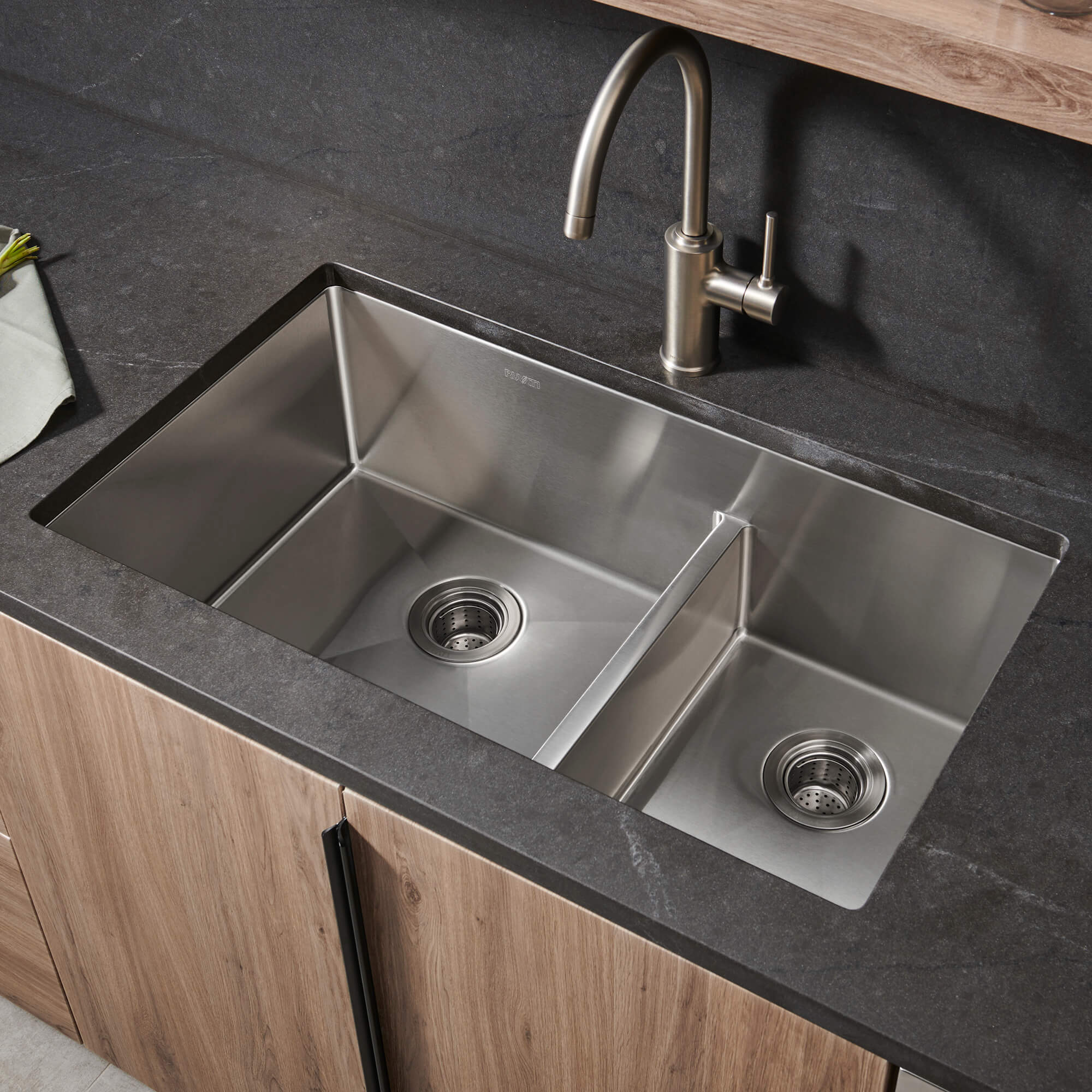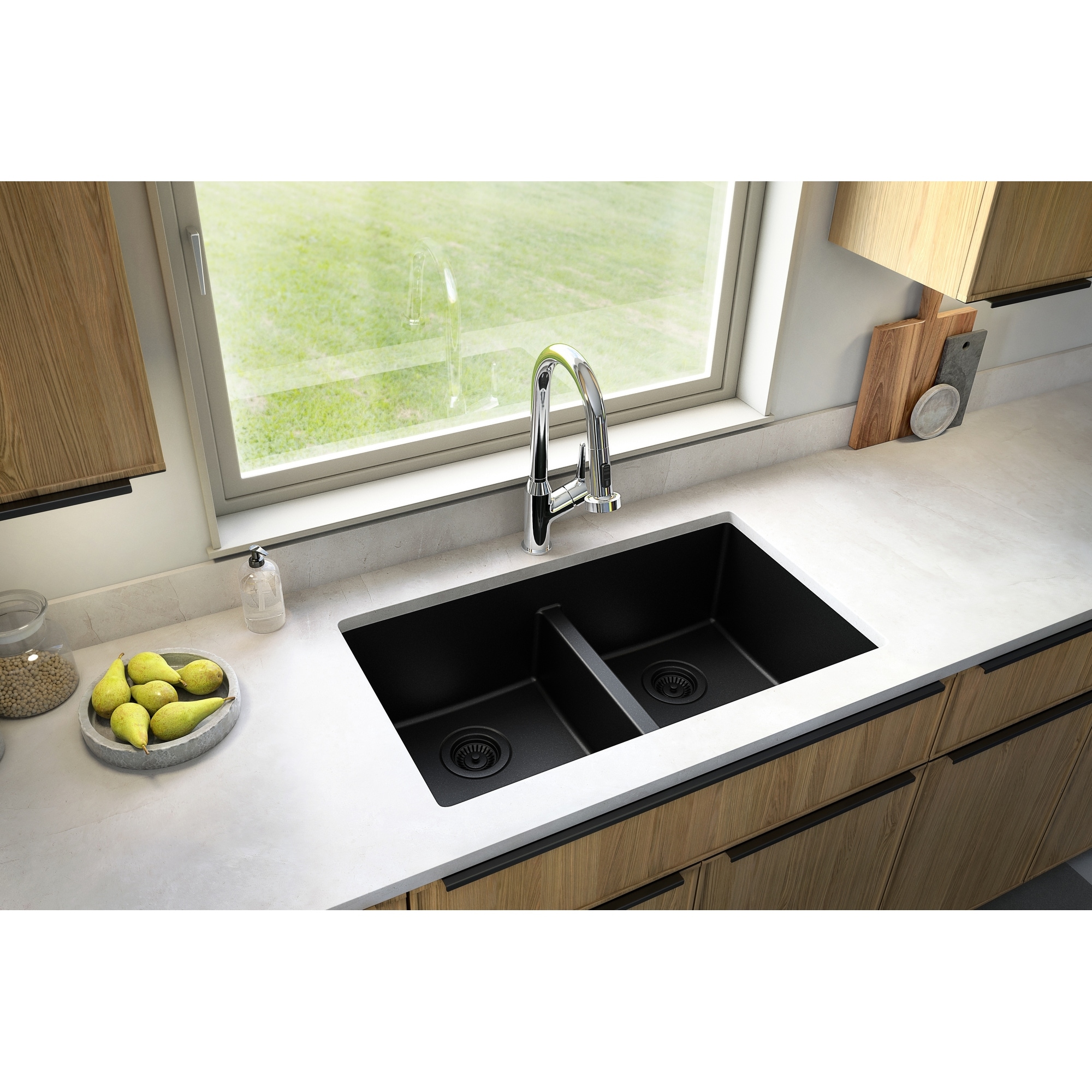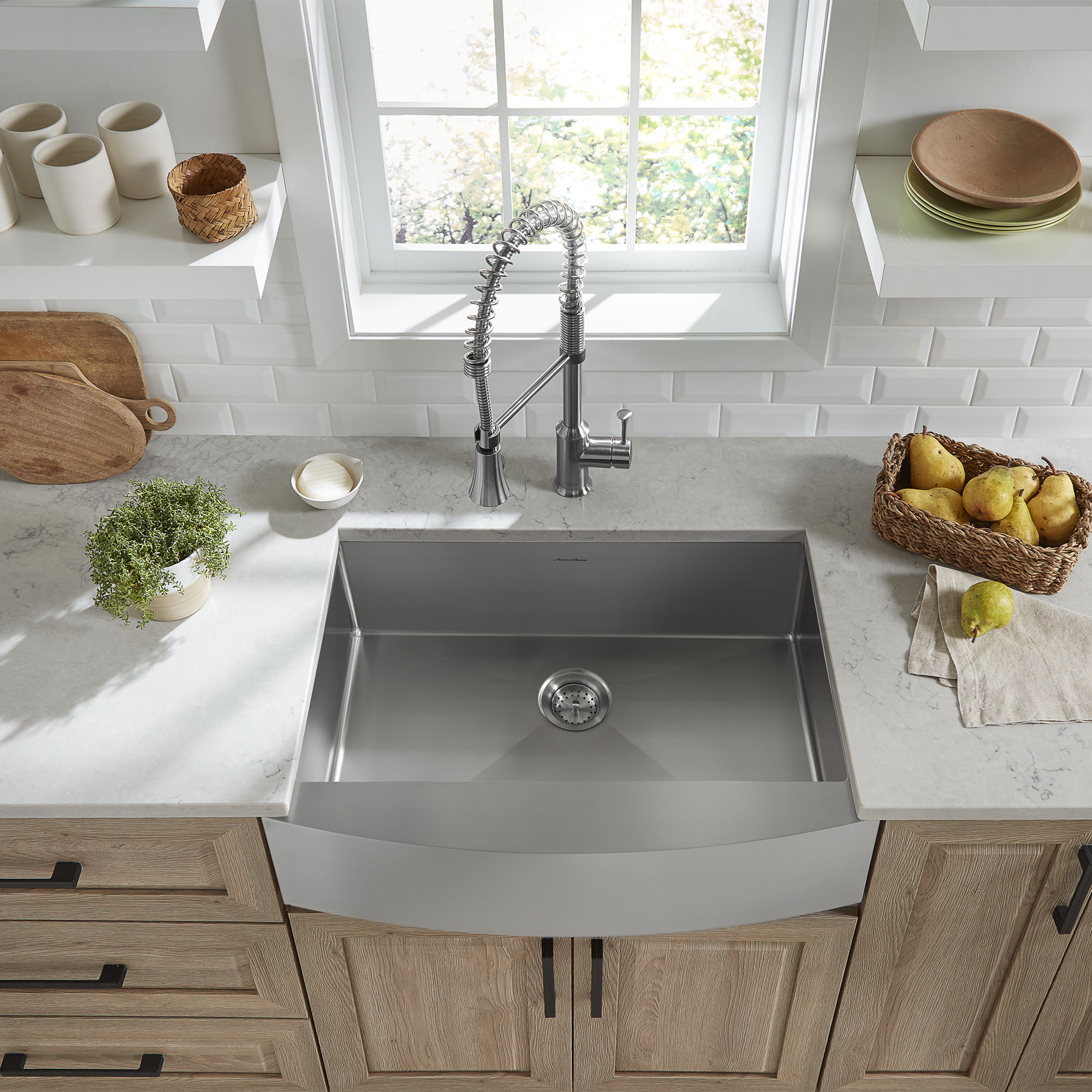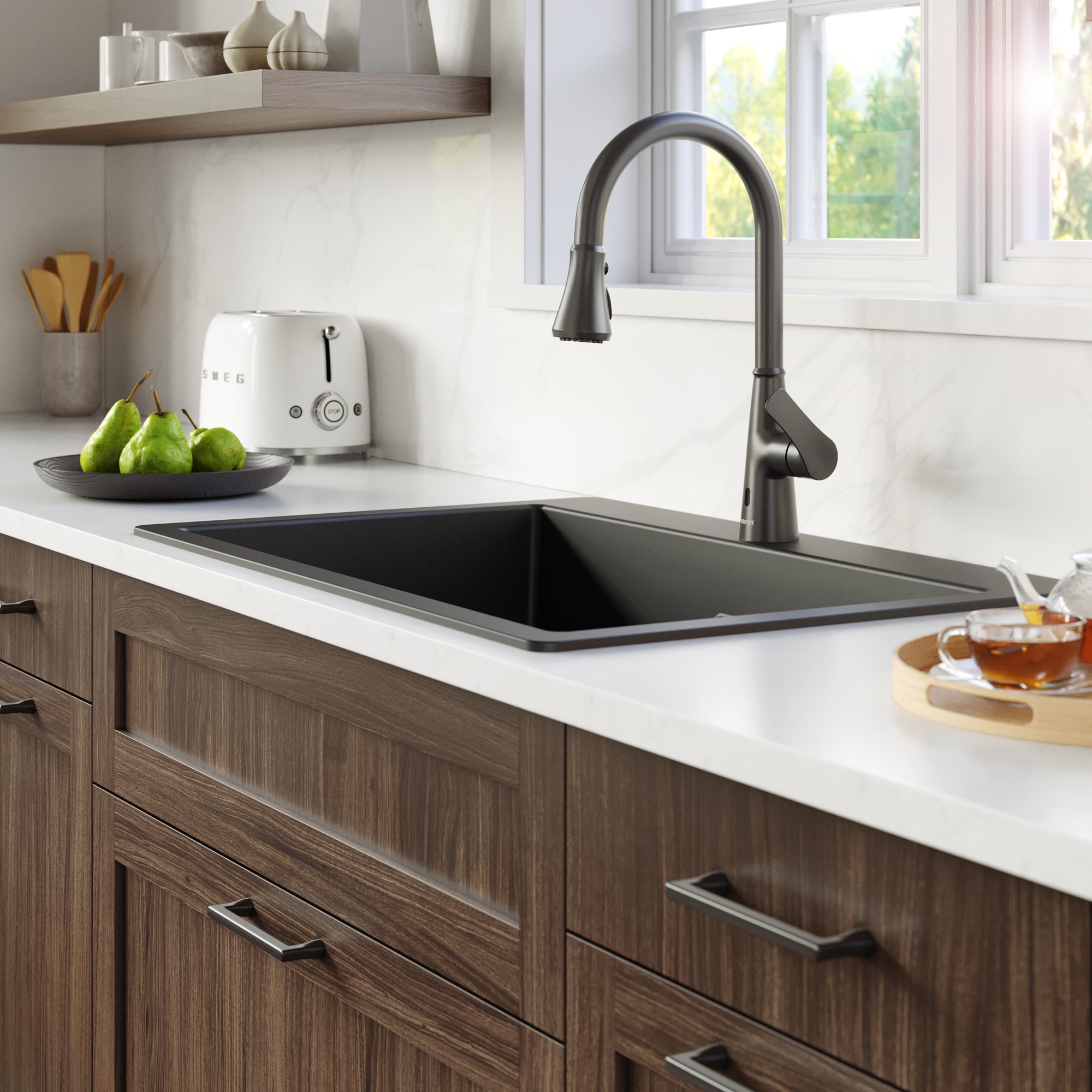The kitchen sink is an essential element of any kitchen, serving as a functional and decorative fixture. With numerous styles and designs available, choosing the right kitchen sink can greatly enhance the overall aesthetic and functionality of the space. In this article, we will explore various styles of kitchen sinks, including traditional top-mount sinks, undermount sinks, farmhouse sinks, and more. Let’s dive into the world of kitchen sinks and discover the different options available to suit your needs and style.

Top-Mount (Drop-In) Sinks:
Top-mount sinks, also known as drop-in sinks, are one of the most common and traditional styles found in kitchens. These sinks have a visible rim that rests on the countertop surface. They are relatively easy to install, as they can be dropped into a pre-cut countertop opening. The rim supports the weight of the sink and creates a seal against water and debris. Top-mount sinks come in various shapes, sizes, and materials, making them a versatile choice for most kitchen designs.
Undermount Sinks:
Undermount sinks are becoming increasingly popular due to their sleek and streamlined appearance. As the name suggests, these kitchen sink are installed underneath the countertop, creating a seamless and clean look. Unlike top-mount sinks, undermount sinks do not have a visible rim, which allows for easy countertop cleaning as debris can be swept directly into the sink. Undermount sinks are typically installed in solid surface countertops, such as granite or quartz, and offer a modern and sophisticated aesthetic.
Farmhouse (Apron-Front) Sinks:
Farmhouse sinks, also known as apron-front sinks, are a classic and stylish addition to any kitchen. These sinks showcase a large and deep basin with a front-facing panel that extends beyond the edge of the countertop. Farmhouse sinks often feature a porcelain or fireclay finish, offering a timeless and rustic charm. They provide ample space for washing large pots and pans and are a popular choice for homeowners seeking a traditional, country-inspired kitchen design.

Stainless Steel Sinks:
Stainless steel sinks are a popular choice for modern kitchens due to their durability, affordability, and versatility. These sinks are resistant to stains, corrosion, and heat, making them a practical and low-maintenance option. They are available in various styles, including top-mount, undermount, and farmhouse, to suit different design preferences.
Composite Sinks:
Composite sinks are made from a blend of materials, typically combining quartz or granite particles with a resin binder. These sinks offer durability, resistance to scratches and stains, and a wide range of color and finish options. Composite replace kitchen sink can mimic the look of natural stone while providing a more affordable alternative. They come in various styles, including top-mount and undermount, and offer a modern and luxurious appearance.
Cast Iron Sinks:
Cast iron sinks have long been favored for their classic and timeless appeal. These sinks are crafted from iron covered with a layer of enamel, which provides a glossy and durable finish. Cast iron sinks are exceptionally durable and resistant to heat, stains, and scratches. They are available in various colors and styles, including top-mount and farmhouse designs. While cast iron sinks require more care to maintain their appearance, they offer a traditional and sophisticated aesthetic.
Fireclay Sinks:
Fireclay sinks are made from a combination of clay and porcelain enamel, resulting in a non-porous and durable finish. These sinks are known for their bright and glossy appearance, resistance to stains and scratches, and overall longevity. Fireclay sinks are often found in farmhouse or apron-front styles, adding a touch of elegance and charm to the kitchen.

How to clean a kitchen sink
A clean and hygienic kitchen sink is essential for maintaining a healthy and functional kitchen. With regular use, kitchen sinks can accumulate dirt, stains, and bacteria, requiring proper cleaning and maintenance. By incorporating simple cleaning routines and using common household products, you can keep your kitchen sink looking sparkling clean.
Cleaning a Stainless Steel Sink:
Stainless steel sinks are durable and resistant to stains, but they can still become dull and develop water spots over time. Here’s how to clean a stainless steel sink effectively:
- Rinse and Remove Debris: Start by rinsing the kitchen sink(lavabo cuisine) with warm water to remove any loose debris and food particles. Use a sponge or soft cloth to wipe away any remaining dirt.
- Create a Cleaning Solution: Mix equal parts of water and mild dish soap in a bowl to create a gentle cleaning solution. Alternatively, you can use a commercial stainless steel cleaner following the instructions on the product label.
- Scrub the Sink Surface: Dip a soft sponge or cloth into the cleaning solution and gently scrub the entire sink surface, paying attention to any stubborn stains or discoloration. Avoid using abrasive scrubbers or scouring pads, as they can scratch the stainless steel surface.
Cleaning a Porcelain Sink:
Porcelain sinks, such as those with a glossy enamel finish or fireclay sinks, require gentle care to avoid scratching or damaging the surface. Here’s how to clean a porcelain sink effectively:
- Rinse and Remove Debris: Begin by rinsing the sink with warm water to remove any loose debris and food particles. Use a sponge or soft cloth to wipe away any remaining dirt.
- Create a Cleaning Paste: Sprinkle baking soda or a powdered cleaning agent specifically made for porcelain onto a damp sponge or cloth. Gently rub the paste onto the sink surface, focusing on any stains or discoloration. Avoid using abrasive scrubbers or harsh chemicals that can damage the porcelain.
- Rinse and Wipe Clean: Thoroughly rinse the sink with warm water to remove the cleaning paste. Use a clean cloth to wipe the surface and ensure all residue is removed.

Cleaning a Composite Sink:
Composite sinks, made of a mixture of materials such as quartz or granite particles and resin, require proper cleaning to maintain their appearance and durability. Here’s how to clean a composite sink effectively:
- Rinse and Remove Debris: Begin by rinsing the sink with warm water to remove any loose debris, food particles, or dirt.
- Create a Cleaning Solution: Mix warm water and mild dish soap in a bowl to create a gentle cleaning solution. Avoid using abrasive cleaners or acidic substances that can damage the composite material.
- Scrub the Surface: Dip a soft sponge or cloth into the cleaning solution and gently scrub the sink surface, paying attention to any stains or discoloration. For tough stains, you can use a non-abrasive nylon brush.
- Rinse and Wipe Clean: Thoroughly rinse the sink with warm water to remove the cleaning solution. Use a clean cloth to wipe the surface and ensure all residue is removed.
Conclusion:
Choosing the right kitchen sink involves considering both functional and style preferences. Whether you opt for a traditional top-mount sink, a modern undermount sink, a rustic farmhouse sink, or a durable stainless steel or composite sink, there are various styles to suit your needs. Each sink style offers unique benefits in terms of aesthetic appeal, durability, and ease of maintenance. By considering factors such as kitchen design, space availability, and personal style, you can select a kitchen sink that enhances both the practicality and visual impact of your kitchen.

